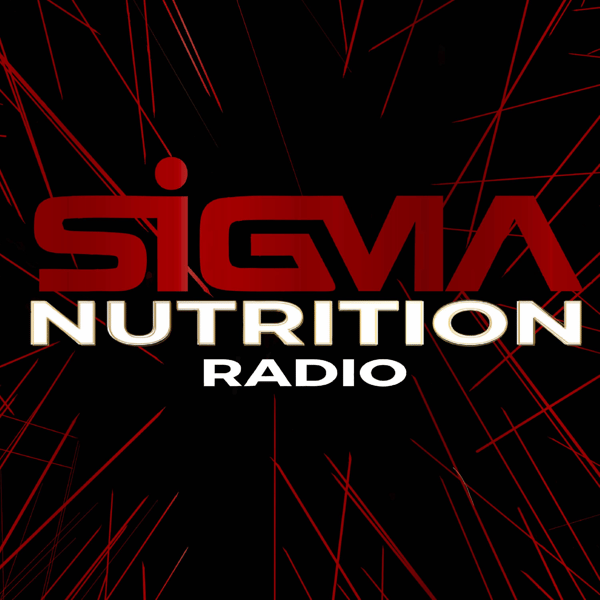#526: Eating Rate, Food Texture & Satiation – Marlou Lasschuijt, PhD
Sigma Nutrition Radio
Danny Lennon
4.8 • 626 Ratings
🗓️ 18 June 2024
⏱️ 32 minutes
🧾️ Download transcript
Summary
Food science and behavior are intimately connected. One critical but often overlooked facet of this connection is food texture and its substantial impact on eating behavior and energy intake.
Food texture encompasses characteristics such as hardness and structure. It categorizes food into liquids, semi-solids, and solids, each with a wide range of textures—from dry and crispy to elastic and more substantial. This classification deeply affects how we consume food. The time it takes to chew and swallow a food item can vary greatly based on its texture.
Different textures can also influence the speed at which satiety signals are triggered. Eating rate is a highly individual trait, stable over time, and consistent across different contexts. Some people are naturally slower eaters, while others consume food quickly. This variance can have significant implications for energy intake and body weight.
In this episode, Dr. Marlou Lasschuijt, an assistant professor in the Sensory Science and Eating Behaviour group at Wageningen University, discusses the above topics and their implications.
Links:
- Subscribe to Sigma Nutrition Premium (for study notes and transcripts)
- Go to episode page
- The Restructure Project
- Receive our free weekly email: the Sigma Synopsis
Timestamps:
- 00:14 Introduction
- 00:47 Dr. Lasschuijt’s Research Focus
- 04:23 Understanding Food Texture and Eating Behavior
- 06:37 Impact of Food Texture on Satiation and Eating Rate
- 16:55 Applications and Innovations in Food Science
- 18:31 Unanswered Questions
- 25:34 Practical Recommendations
- 27:00 Current and Upcoming Research Projects
Transcript
Click on a timestamp to play from that location
| 0:00.0 | Hello and welcome to Sigma Nutrition Radio, the podcast where we have evidence-based discussions |
| 0:18.6 | around topics related to nutrition and health sciences. |
| 0:22.3 | I'm your host, Danny Lennon. You are very welcome to episode 526 of the podcast. |
| 0:28.7 | Thank you for joining me. I hope you enjoy this episode that we have ahead. |
| 0:33.3 | And we're going to be talking about a range of interesting topics related to things like eating rate, |
| 0:39.4 | food texture, satiation, and some of the sensory properties of food and how they have |
| 0:44.4 | implications for some of our behaviors around food. |
| 0:48.0 | And to go through some of the evidence in this area today, I'm going to be talking to Dr. Marlou |
| 0:52.8 | Laskout, who is an assistant professor in the |
| 0:56.9 | sensory science and eating behavior group at Vagun University in the Netherlands. |
| 1:01.7 | And she completed her PhD at the same university where she studied sensory physiological systems |
| 1:08.2 | involved in cessation. And during her postdoc work, she has worked with researchers from a variety of different areas and different groups |
| 1:16.6 | in order to develop new technologies to measure food intake and eating behavior. |
| 1:20.6 | Right now, her current research focuses on the link between eating behavior and physiology in both healthy and clinical populations. |
| 1:29.3 | And so we're going to dive through some of these concepts, which hopefully will be of interest to you. |
| 1:36.3 | If you are a Sigma Nutrition Premium subscriber, you'll be able to get a set of detailed study notes in the description box wherever you're listening right now, |
| 1:44.2 | as well as a full episode transcript. And after this conversation, you will also automatically |
| 1:50.6 | hear the key ideas segment for this episode. If you are listening on the public feed, but you |
| 1:57.2 | are interested in maybe taking your podcast listening into a bit of a deeper place. |
| 2:02.6 | You can have a look at what we offer with our Sigma Nutrition Premium subscription |
| 2:06.9 | by clicking the link for details in the description box wherever you're currently listening right now. |
| 2:12.9 | Also there you'll see more of a description about this episode, |
... |
Please login to see the full transcript.
Disclaimer: The podcast and artwork embedded on this page are from Danny Lennon, and are the property of its owner and not affiliated with or endorsed by Tapesearch.
Generated transcripts are the property of Danny Lennon and are distributed freely under the Fair Use doctrine. Transcripts generated by Tapesearch are not guaranteed to be accurate.
Copyright © Tapesearch 2025.

